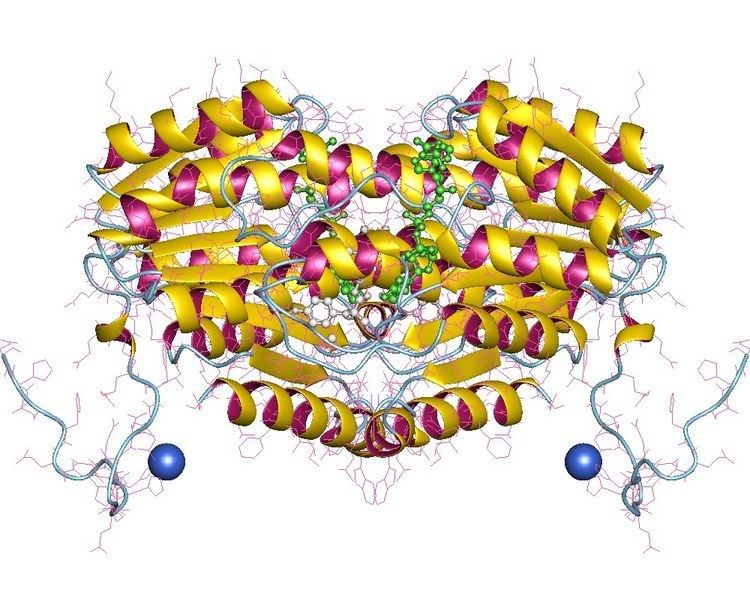EC number 1.1.1.146 IntEnz IntEnz view ExPASy NiceZyme view | CAS number 9041-46-7 BRENDA BRENDA entry KEGG KEGG entry | |
 | ||
11β-Hydroxysteroid dehydrogenase (HSD-11β or 11β-HSD) is the name of a family of enzymes that catalyze the conversion of inert 11 keto-products (cortisone) to active cortisol, or vice versa, thus regulating the access of glucocorticoids to the steroid receptors:
Contents
11β-hydroxysteroid + NADP+ ⇌ an 11-oxosteroid + NADPH + H+Thus, the two substrates of this enzyme are 11beta-hydroxysteroid and NADP+, whereas its 3 products are 11-oxosteroid, NADPH, and H+.
This enzyme belongs to the family of oxidoreductases, specifically those acting on the CH-OH group of donor with NAD+ or NADP+ as acceptor. The systematic name of this enzyme class is 11beta-hydroxysteroid:NADP+ 11-oxidoreductase. Other names in common use include corticosteroid 11β-dehydrogenase, β-hydroxysteroid dehydrogenase, 11β-hydroxy steroid dehydrogenase, corticosteroid 11-reductase, and dehydrogenase, 11β-hydroxy steroid. This enzyme participates in c21-steroid hormone metabolism and androgen and estrogen metabolism.
Structural studies
As of late 2007, 8 structures have been solved for this class of enzymes, with PDB accession codes 1XSE, 1XU7, 1XU9, 1Y5M, 1Y5R, 2BEL, 2ILT, and 2IRW.
Function
Cortisol, a glucocorticoid, binds the glucocorticoid receptor. However, because of its molecular similarity to aldosterone it is also capable of binding the mineralcorticoid receptor. Both aldosterone and cortisol have a similar affinity for the mineralocorticoid receptor; however, there is vastly more cortisol in circulation than aldosterone. To prevent over-stimulation of the mineralocorticoid receptor by cortisol, HSD-11β converts the biologically active cortisol to the inactive cortisone, which can no longer bind to the mineralocorticoid receptor. 11β-HSD co-localizes with intracellular adrenal steroid receptors. Licorice, which contains glycyrrhetinic acid, or carbenoxolone can inhibit 11β-HSD and lead to a mineralocorticoid excess syndrome.
Isoforms
In humans, there are two HSD11B isoforms:
Inhibition of HSD11B1 has been suggested as a possible therapy for treatment of obesity and metabolic syndrome.
